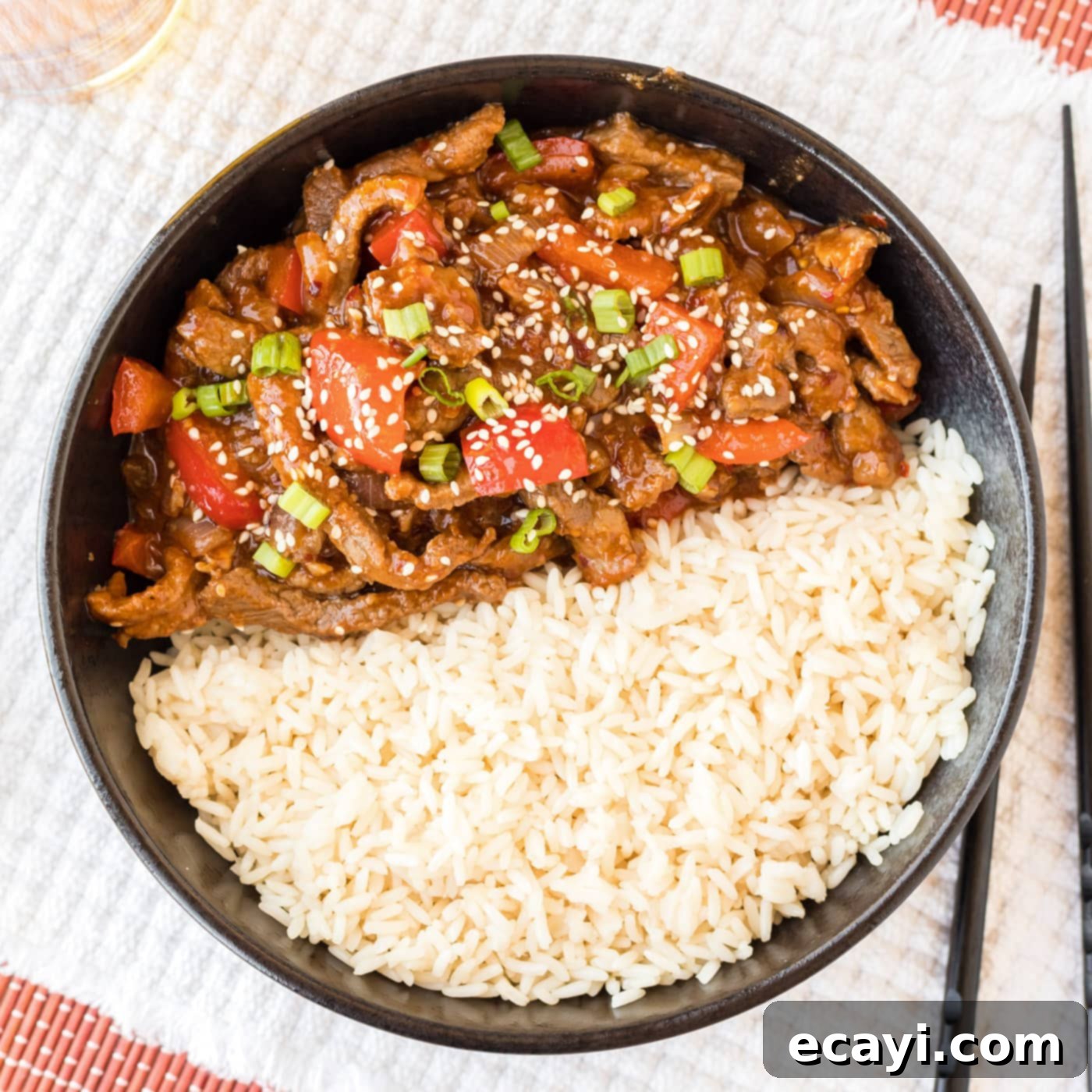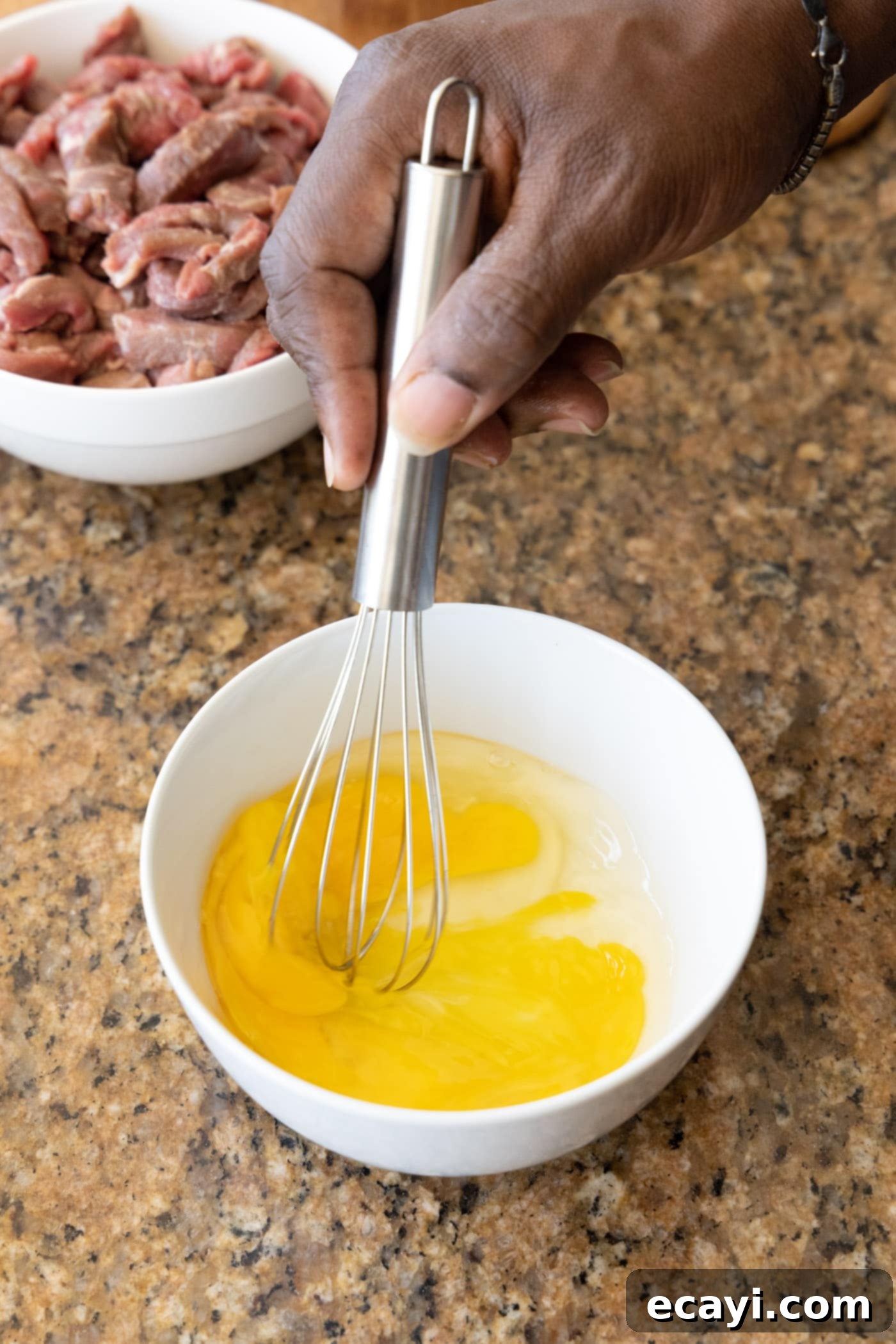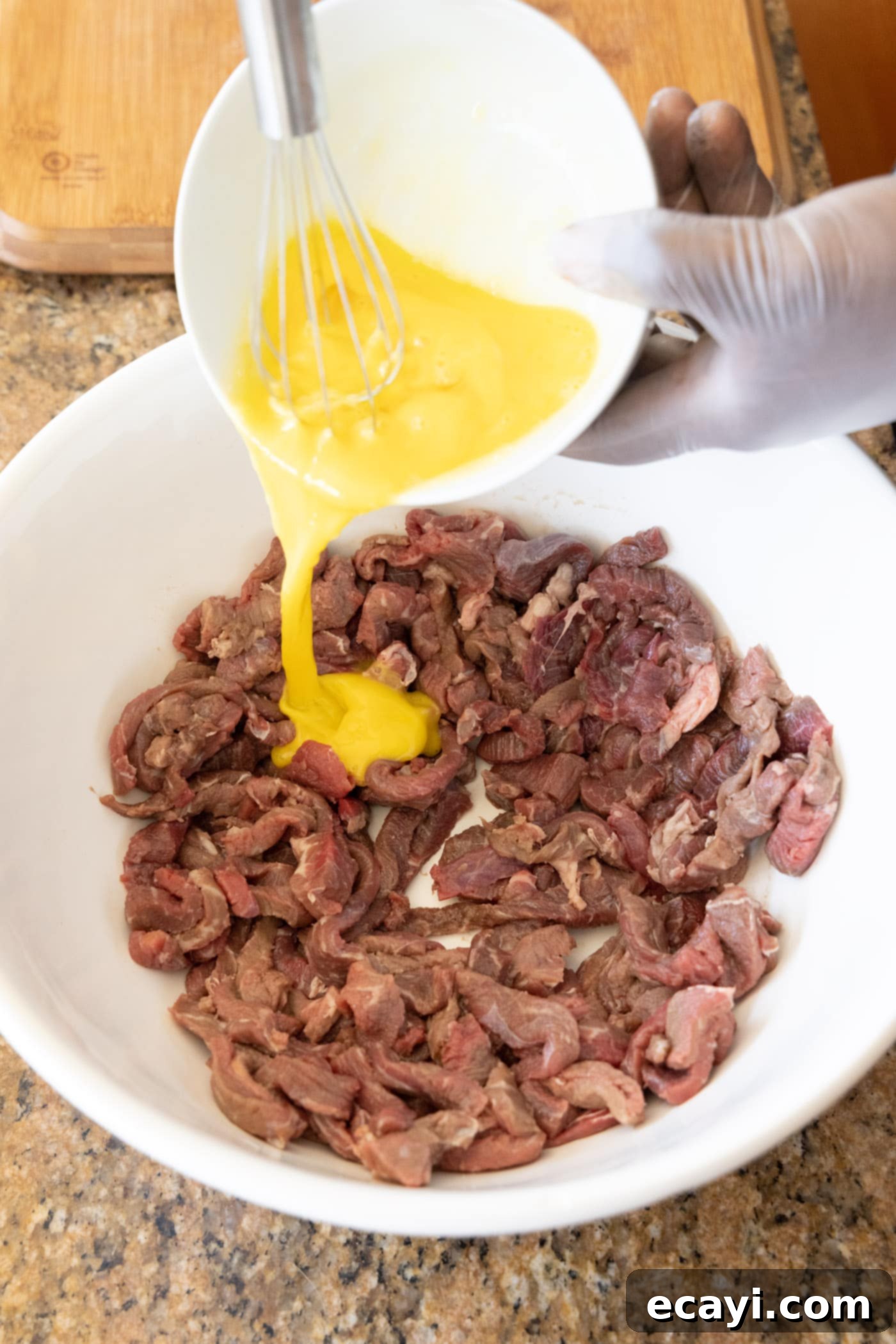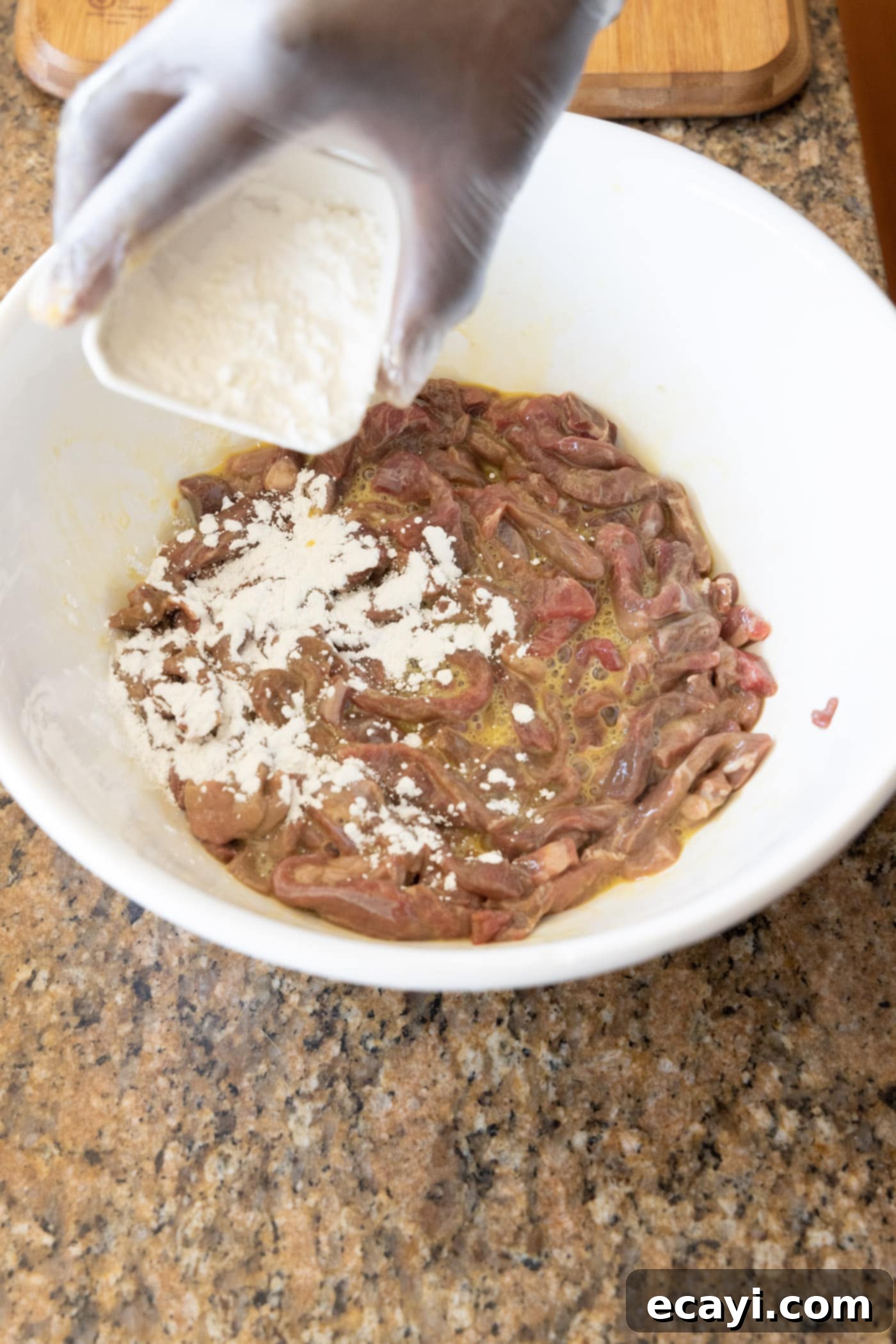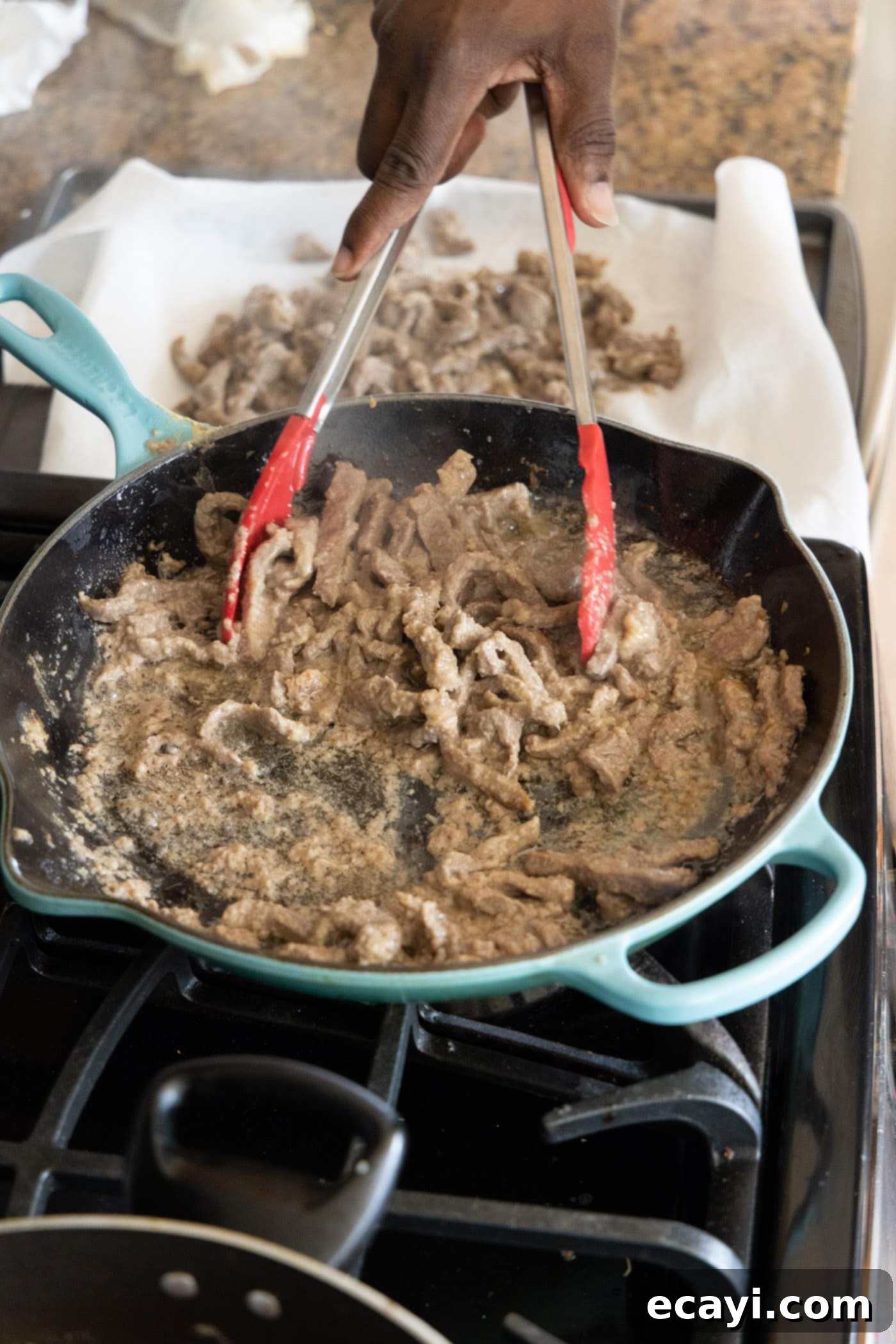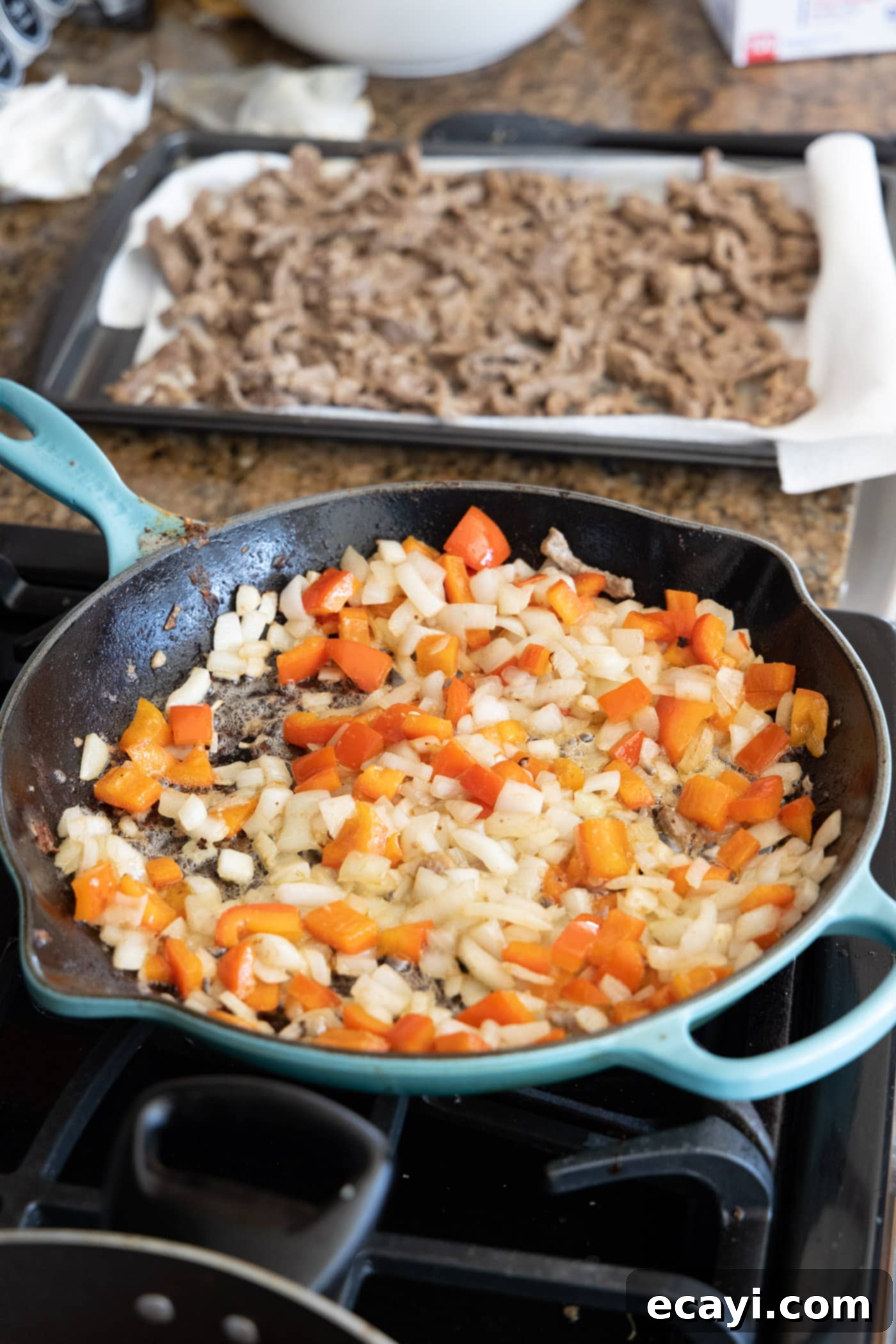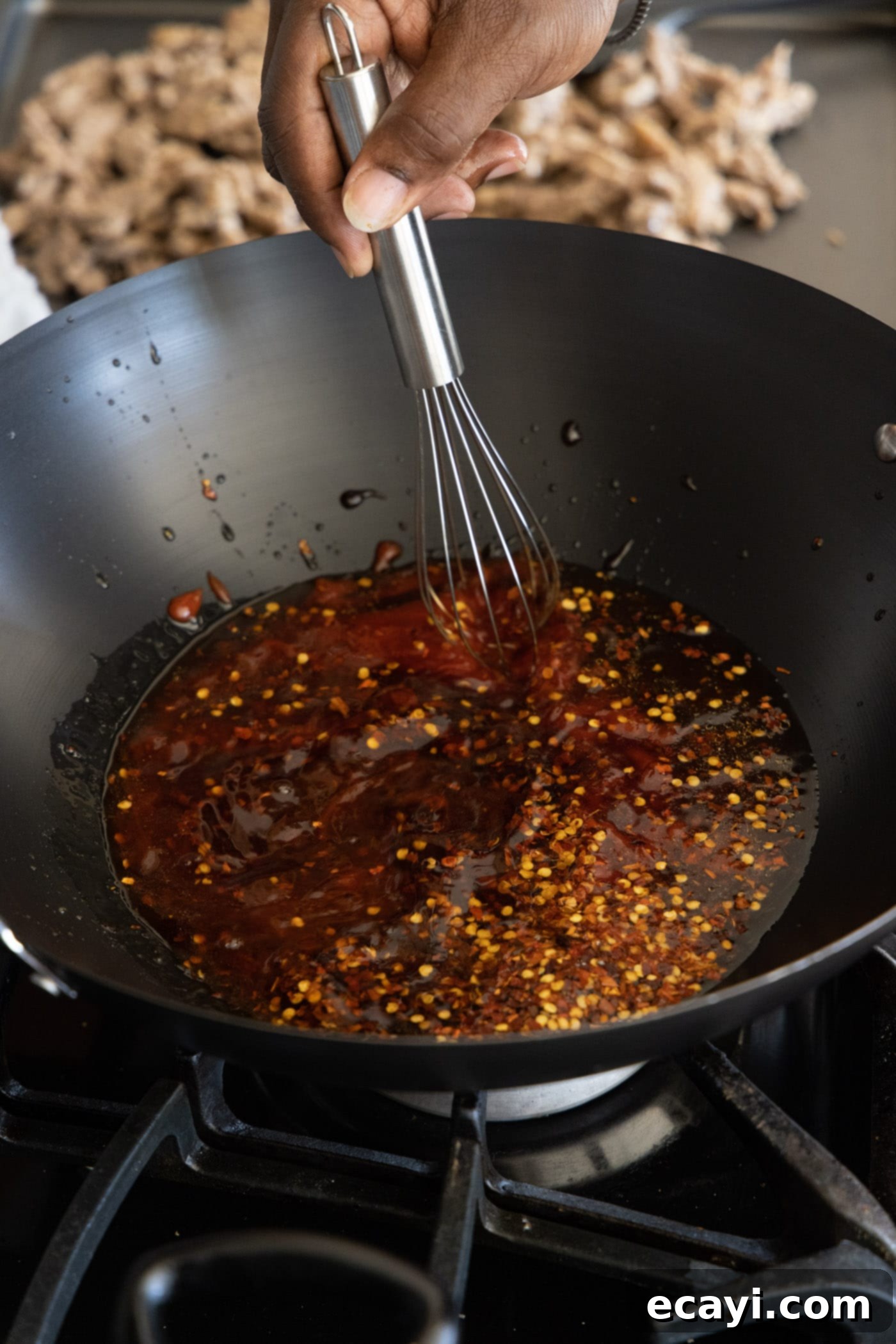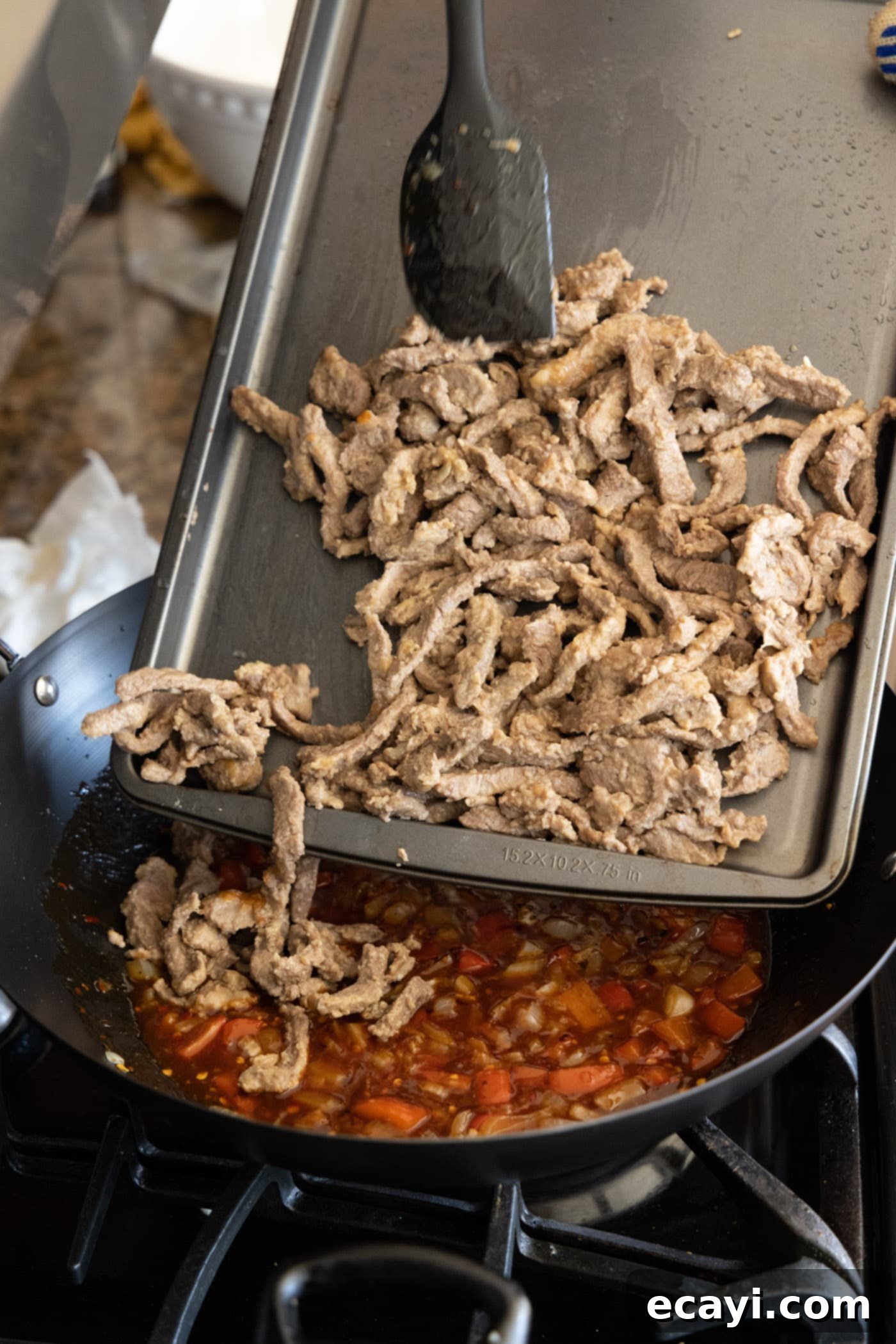Ultimate Crispy Beijing Beef Recipe: Your Homemade Panda Express Favorite
Craving the irresistible sweet, spicy, and tangy flavors of Beijing Beef? Look no further! This homemade Beijing Beef recipe brings the beloved crispy beef strips, perfectly sautéed bell peppers, and tender onions together in a rich, flavorful sauce, all tossed in a sizzling wok. Forget the takeout and the heat lamp – this copycat Panda Express Beijing Beef offers an unparalleled freshness and crispness that will make it your new go-to for Chinese American cuisine at home. Get ready for a dish so delicious, you’ll wonder why you ever ordered in!
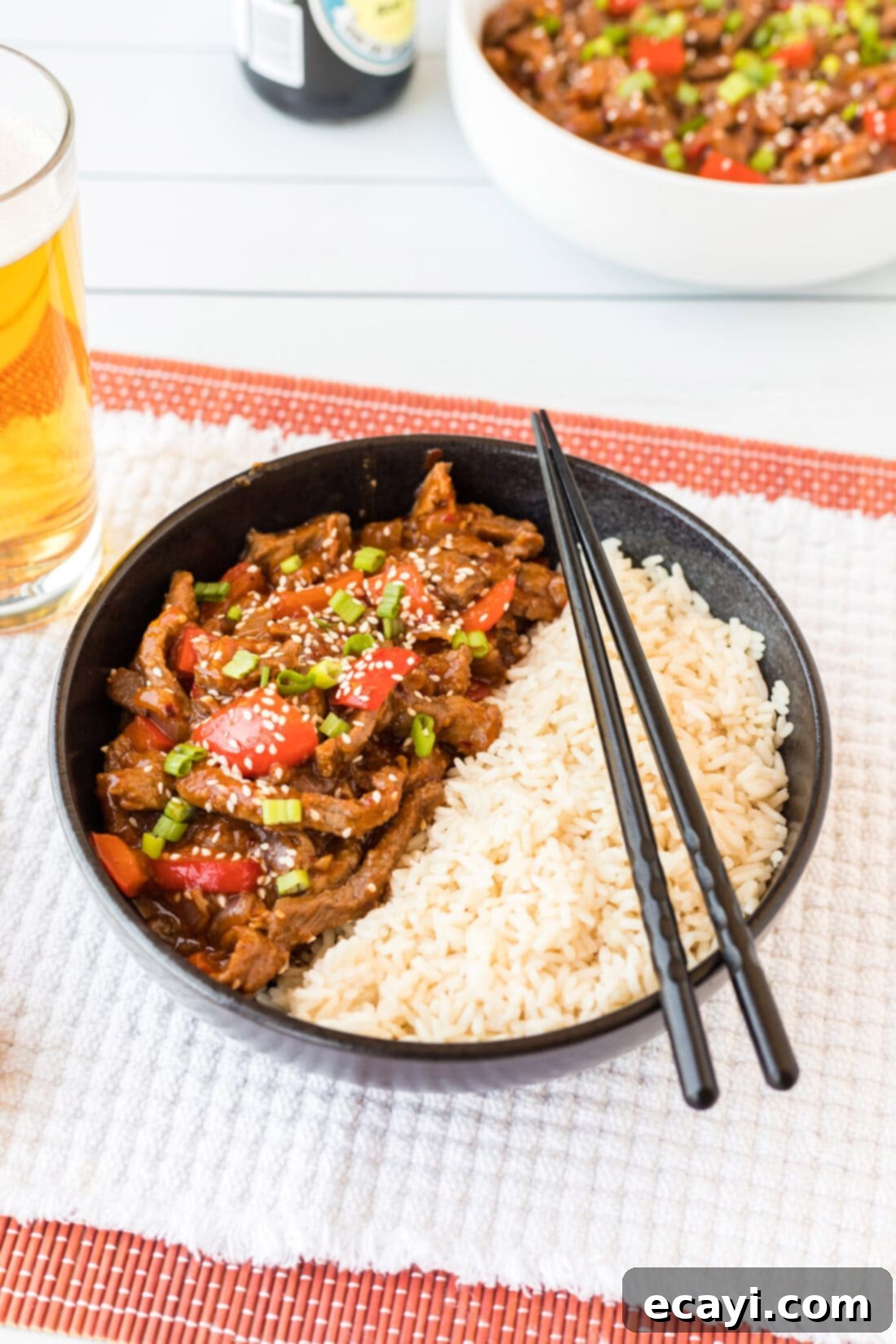
Why This Homemade Beijing Beef Recipe is a Must-Try
Beijing Beef is a quintessential Americanized Chinese dish, famous for its appealing balance of flavors and textures. It’s no secret that it stands as one of Panda Express’s most popular entrees, drawing crowds with its signature crispy beef and vibrant sauce. While the exact restaurant recipe remains a closely guarded secret, our meticulously crafted copycat version captures all the magic – the satisfying crunch, the perfect blend of sweet and spicy, and that signature tangy finish – without the need for a trip to the food court or worrying about how long it’s been sitting under a heat lamp. This means you get a superior, restaurant-quality meal, fresh off your stove!
What truly sets our Beijing Beef apart is the exceptional homemade sauce. We’ve developed a robust blend featuring a harmonious mix of soy sauce for umami depth, oyster sauce for richness, sweet chili sauce for that essential kick and sweetness, red pepper flakes for adjustable heat, aromatic sesame oil, bright rice wine vinegar, savory hoisin, a touch of apple cider vinegar for extra tang, and even ketchup for body and a familiar sweet-tang. This extensive list of ingredients might seem daunting, but rest assured, they come together effortlessly to create a complex and irresistible flavor profile that elevates the entire dish. Pairing this delectable Beijing Beef with classic chow mein or fluffy fried rice creates a complete and utterly satisfying meal that rivals any takeout experience.
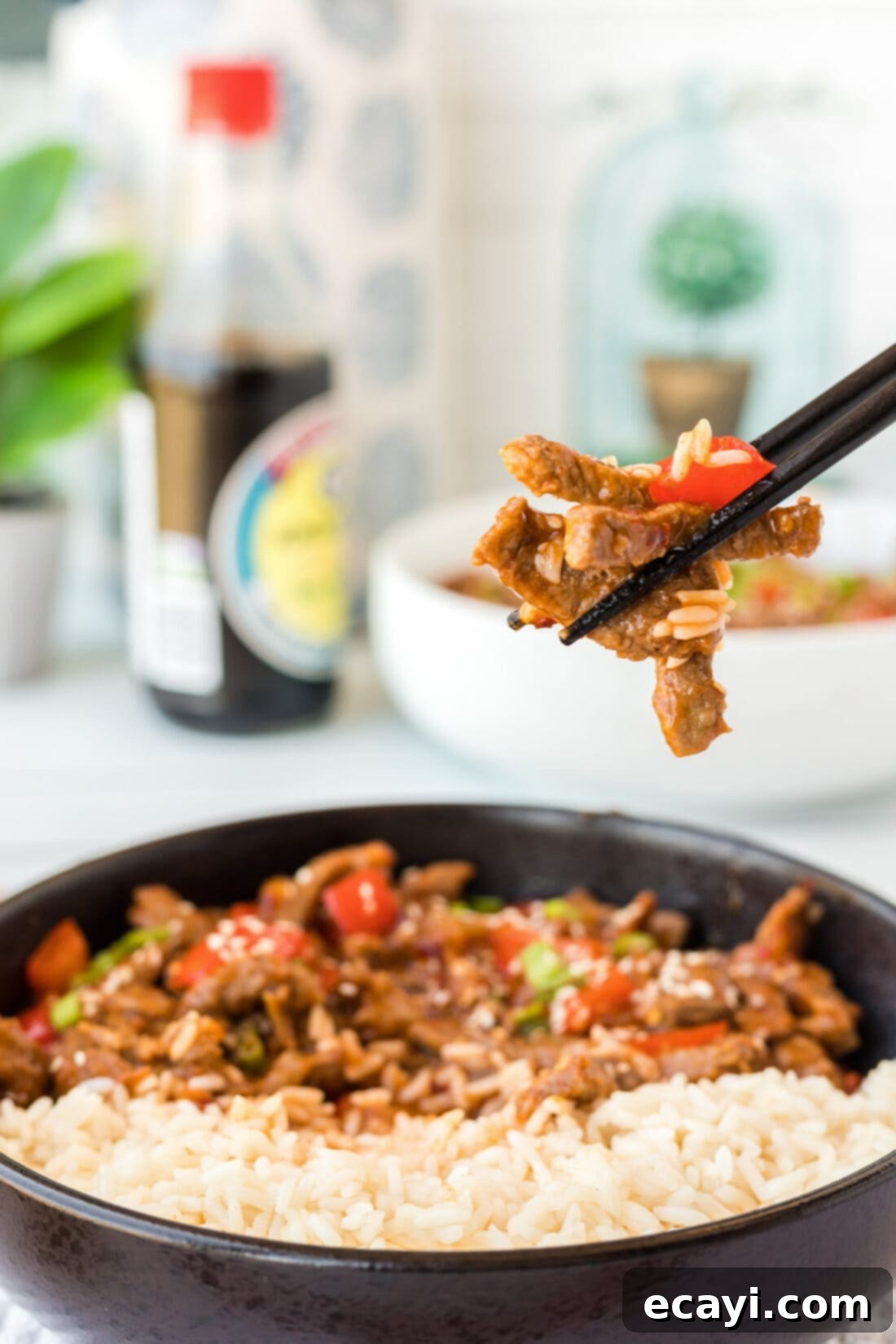
Essential Ingredients for Perfect Beijing Beef
To embark on this culinary adventure and recreate the ultimate crispy Beijing Beef, you’ll need a selection of fresh ingredients and pantry staples. All precise measurements, detailed ingredients, and step-by-step instructions are available in the printable recipe card at the conclusion of this post.
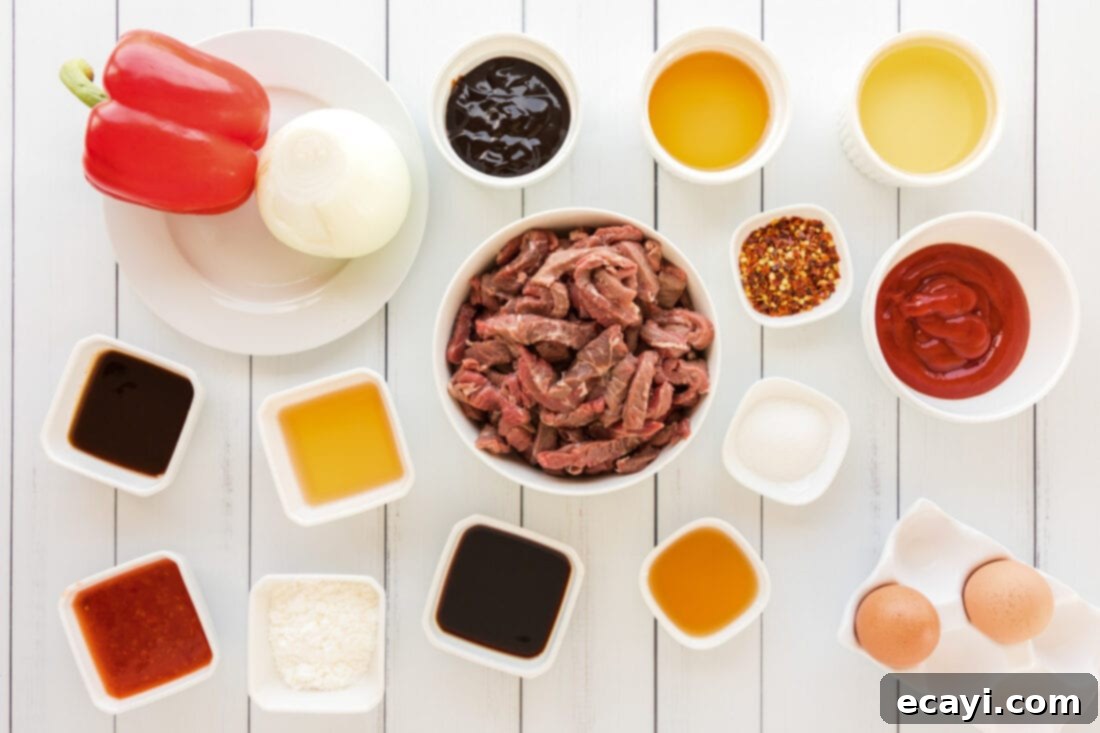
Ingredient Spotlight: Tips & Substitutions
Understanding each component is key to mastering this Beijing Beef recipe. Here’s a deeper dive into the ingredients and how to get the best results:
BEEF – The foundation of any great beef stir-fry is the cut of meat. For this recipe, either flank steak or sirloin tip steak will yield excellent results. These cuts are lean and become wonderfully tender when sliced thinly against the grain. Slicing against the grain is crucial as it shortens the muscle fibers, ensuring a more tender bite. To make slicing easier and achieve those super thin strips, we highly recommend flash-freezing the meat for about 30 minutes before cutting. This firms up the beef without fully freezing it, allowing for cleaner, more precise cuts. Remember to bring the meat back to room temperature before you begin the cooking process for even cooking. While not traditional, you could also experiment with skirt steak for a similar texture, or even boneless, skinless chicken thighs if you prefer poultry.
VEGETABLES – Red bell pepper and yellow onion are not just essential for the authentic Beijing Beef flavor and appearance, they also provide crucial texture and sweetness. The red bell pepper offers a mild, sweet crunch and a vibrant pop of color, while the yellow onion becomes delightfully tender and sweet as it cooks. To ensure even cooking and a beautiful presentation, try to chop your vegetables into pieces of a similar size. Don’t hesitate to add other vegetables to your liking for extra nutrition and variety. Broccoli florets, snow peas, sliced carrots, or even bamboo shoots and water chestnuts can be fantastic additions, bringing their own unique textures and flavors to the wok.
THE SAUCE – This homemade sauce is the heart and soul of our Beijing Beef. It’s a masterful blend designed to deliver the signature sweet, tangy, and subtly spicy flavor profile. Soy sauce provides the fundamental savory umami, while oyster sauce adds a deeper, richer, slightly sweet complexity. Sweet chili sauce contributes both sweetness and a gentle heat, complemented by the fiery kick of red pepper flakes, which you can adjust to your personal spice preference. Sesame oil infuses a nutty aroma, and the combination of rice wine vinegar and apple cider vinegar delivers a vibrant tang. Hoisin sauce adds a thick, savory-sweet depth, and a touch of ketchup rounds out the sauce with its familiar sweetness and body. Each ingredient plays a vital role in creating a balanced and incredibly delicious glaze.
THE COATING – The secret to those perfectly crispy beef strips lies in the simple yet effective coating. Whisked eggs create a binding layer, allowing the cornstarch to adhere beautifully to the beef. This cornstarch coating is essential; it fries up to a golden crisp, creating a protective barrier that seals in the beef’s moisture while providing that delightful crunch that Beijing Beef is famous for. This step ensures your beef isn’t just flavorful, but also texturally superior to many takeout versions.
How to Make Crispy Beijing Beef: A Step-by-Step Guide
These step-by-step photos and detailed instructions are here to help you visualize how to make this delicious recipe from start to finish. For the complete printable version of this recipe, including exact measurements and a concise instruction list, you can Jump to Recipe at the bottom of this post.
- Begin by preparing your vegetables. Chop the yellow onion and red bell pepper into uniform, bite-sized pieces. Aim for consistency so they cook evenly and integrate well with the beef.
- Next, prepare the beef. Using a very sharp knife, slice your flank steak or sirloin tip steak into thin strips, making sure to cut against the grain. This technique is vital for tender beef.
- In a medium-sized bowl, whisk the two eggs until well-beaten and frothy. This will create a light coating for the beef.

- Pour the whisked egg mixture evenly over the sliced beef strips. Mix thoroughly to ensure every piece of beef is coated. Then, sprinkle the cornstarch over the beef and egg mixture. Using gloved hands (or clean bare hands), mix vigorously until the cornstarch is completely combined and adheres to all the beef strips, forming a light, even coating. This coating is crucial for achieving that desired crispy texture.


- Heat the vegetable oil in a large, heavy-bottomed skillet or wok over medium-high heat. Wait until the oil is shimmering, indicating it’s hot enough for frying.
- Carefully add the coated beef strips to the hot oil. Avoid overcrowding the pan; if necessary, cook the beef in batches to ensure it crisps up rather than steams. Turn the beef occasionally with tongs until no pink remains and the strips are beautifully golden brown and crispy.
- Once cooked, remove the crispy beef from the skillet and transfer it to a plate, keeping it warm while you prepare the vegetables. Add the chopped onion and bell pepper to the drippings left in the pan. Stir-fry for a few minutes until they are tender-crisp. Remove them from the pan and set aside with the beef.


- Wipe the pan clean with a paper towel and place it back over medium-high heat. Add all the remaining sauce ingredients (soy sauce, oyster sauce, sweet chili sauce, red pepper flakes, granulated sugar, sesame oil, apple cider vinegar, rice wine vinegar, hoisin sauce, and ketchup) to the pan. Whisk them together thoroughly until well combined. Bring the sauce to a gentle boil, allowing it to thicken slightly.

- Finally, return the cooked onion, bell pepper, and crispy beef back into the pan with the simmering sauce. Using a rubber spatula, stir everything gently but thoroughly to ensure the beef and vegetables are evenly coated in the rich, glossy sauce. Continue to simmer over medium-low heat for 2-3 minutes, allowing all the flavors to meld and the dish to heat through. Serve immediately and enjoy!

Frequently Asked Questions & Expert Tips for Beijing Beef
To maintain optimal freshness and flavor, store any leftover Beijing Beef in an airtight container in the refrigerator for up to 4 days. When reheating, the key is to revive that delicious crispiness. While you can reheat it in a skillet over medium-low heat until warmed through (adding a splash of water if the sauce has thickened too much), for the best crispy texture, we recommend using an air fryer or a hot oven. Spread the beef and vegetables in a single layer and heat at 375°F (190°C) for 5-7 minutes in an air fryer, or 10-15 minutes in an oven, until heated through and crisp.
While both Beijing beef and Mongolian beef are popular Chinese American dishes often made with similar cuts of beef like flank steak, they are quite distinct in their preparation, texture, and flavor profiles. Beijing beef is characterized by its signature crispy texture, achieved by lightly coating the beef in egg and cornstarch before frying. Its sauce is a complex balance of sweet, spicy, and tangy notes, often incorporating ketchup and a variety of vinegars. Mongolian beef, on the other hand, typically features a more tender, velveted beef (often achieved through a different marinating process) and is known for its rich, savory, and slightly sweet hoisin-based sauce, which is usually milder but can sometimes include dried chili peppers for heat. The crispiness is the defining characteristic that separates Beijing beef from its tender Mongolian counterpart.
Absolutely! The beauty of cooking at home is customization. The primary source of heat in this recipe comes from the red pepper flakes and sweet chili sauce. If you prefer a milder dish, reduce the amount of red pepper flakes or omit them entirely. For those who love extra heat, feel free to add more red pepper flakes, or a dash of sriracha or chili garlic sauce to the simmering sauce to kick things up a notch.
Achieving perfectly crispy beef is crucial for authentic Beijing Beef. Here are our top tips: 1. Slice Thinly and Against the Grain: This ensures tenderness and helps the beef crisp up quickly. 2. Proper Coating: Ensure every piece of beef is evenly coated with the egg and cornstarch mixture. 3. Hot Oil: Heat your oil to shimmering before adding the beef. Too-cool oil will result in soggy beef. 4. Don’t Overcrowd: Cook the beef in batches if necessary. Overcrowding drops the oil temperature and steams the beef instead of frying it, preventing that desired crispiness. 5. Use a Wok or Heavy Skillet: These distribute heat evenly, which is essential for stir-frying.
Yes, you can! Boneless, skinless chicken thighs or breasts cut into similar strips would work wonderfully as a substitute for beef. The cooking process would remain largely the same, focusing on achieving a golden, crispy coating on the chicken before tossing it in the sauce. The flavor profile of the sauce would complement chicken beautifully.
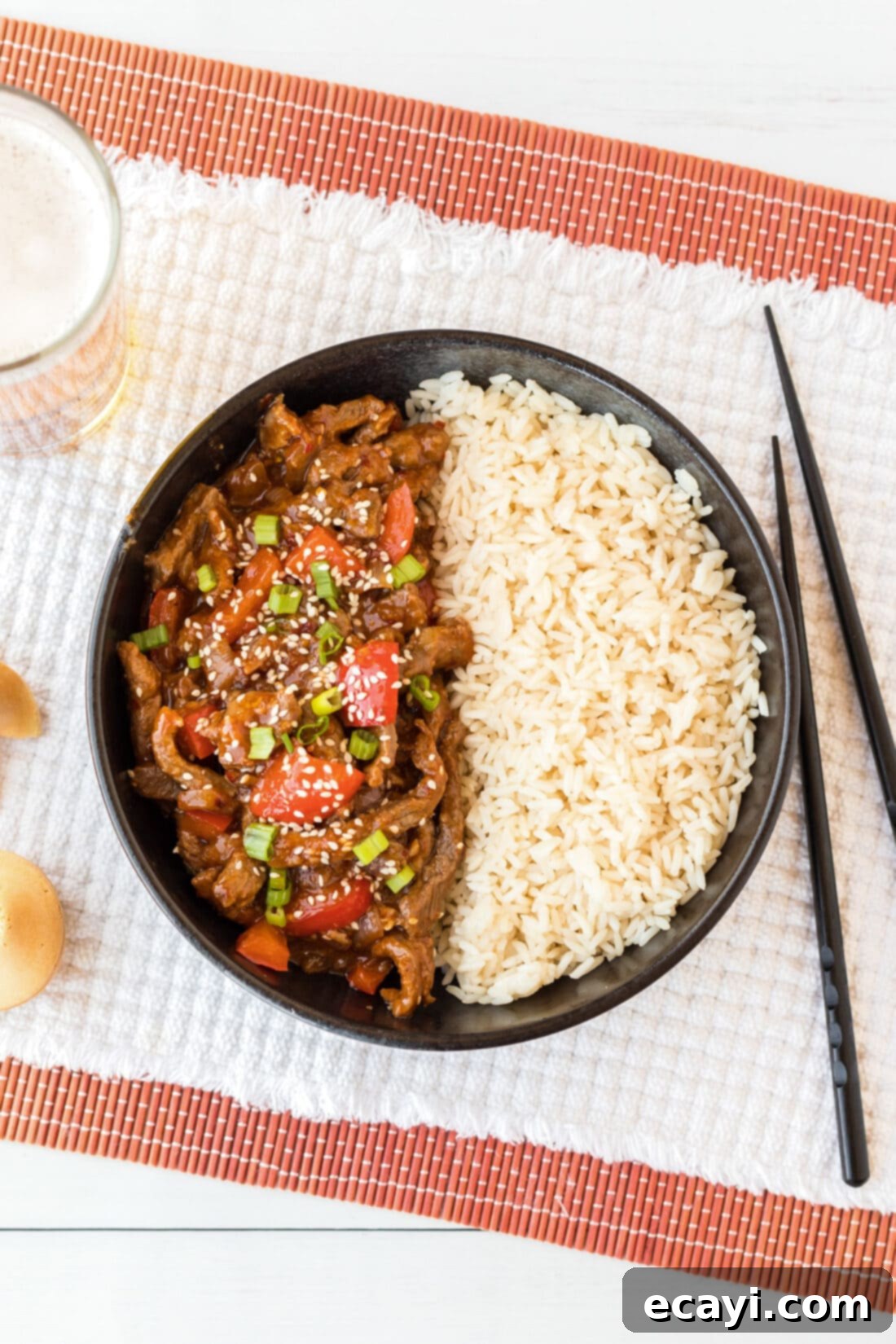
Delicious Serving Suggestions for Beijing Beef
Beijing Beef is incredibly versatile and pairs beautifully with a variety of sides. For a classic Chinese American meal, serve it alongside a generous portion of fluffy white rice, savory fried rice, or a comforting side of chow mein noodles. To enhance the presentation and add a fresh aromatic touch, garnish your dish with thinly sliced green onions. For a lighter meal, consider serving the Beijing Beef in crisp lettuce cups, or alongside steamed vegetables like broccoli or snap peas. The sweet and tangy sauce makes it a delightful centerpiece for any dinner.
Explore More Asian-Inspired Recipes
If you loved this Beijing Beef recipe, you’ll definitely want to try some of our other popular Asian-inspired dishes:
- Orange Chicken: Sweet, sticky, and irresistibly tangy, this classic is a guaranteed crowd-pleaser.
- Teriyaki Chicken: Tender chicken glazed in a savory-sweet teriyaki sauce, perfect for a quick weeknight meal.
- Mongolian Beef: Another beef stir-fry favorite, known for its tender beef and rich, savory sauce.
- Kung Pao Chicken: A spicy, savory, and nutty chicken dish with a delightful Sichuan kick.
- General Tso Chicken: Crispy chicken in a deep, flavorful, sweet, and slightly spicy sauce.
I love to bake and cook and share my kitchen experience with all of you! Remembering to come back each day can be tough, that’s why I offer a convenient newsletter every time a new recipe posts. Simply subscribe and start receiving your free daily recipes!
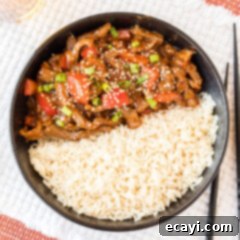
Beijing Beef
IMPORTANT – Don’t miss the detailed Frequently Asked Questions and Expert Tips section within the blog post for invaluable insights and tricks to perfect this recipe. Simply scroll back up to read them!
Print It
Pin It
Rate It
Save ItSaved!
Ingredients
- 1 ½ pounds flank steak or sirloin tip steak, thinly sliced against the grain
- 2 eggs
- 2 Tablespoons cornstarch
- ½ cup vegetable oil for frying
- 1 red bell pepper chopped into bite-sized pieces
- 1 yellow onion chopped into bite-sized pieces
- ¼ cup soy sauce
- 2 Tablespoons oyster sauce
- 4 Tablespoons sweet chili sauce
- 1 Tablespoon red pepper flakes (adjust to taste)
- 2 Tablespoons granulated sugar
- 1 Tablespoon sesame oil
- ¼ cup apple cider vinegar
- 2 Tablespoons rice wine vinegar
- ¼ cup hoisin sauce
- ½ cup ketchup
Things You’ll Need
-
Wok or large heavy bottom skillet
-
Tongs
-
Rubber spatula
